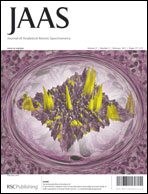Sulfur stands out among non-metallic elements essential to life. In biological systems sulfur exists in various oxidation states, but the most significant role in biochemical processes is played by sulfane sulfur. In this work sulfur speciation in brain tumors was studied using X-ray absorption near edge structure spectroscopy. The comparison of full XANES spectra measured inside the tumor cell, outside the cell and on its periphery with the XANES profiles of reference materials containing sulfur compounds shows that in all the examined tissue sites, sulfur is in the 2− oxidation state. However, special emphasis is placed on the experimental and methodological aspects of two-dimensional imaging of chemical forms of sulfur in tissue sections. It was found that after changing the photon energy of the exciting radiation beam, not only did a permanent shift of its position in the XY plane occur, but also a change in the beam incidence angle on the sample. Therefore procedures to eliminate these effects in imaging the distribution of chemical forms of sulfur, using a synchrotron radiation microprobe, are also shown. The results allowed for the identification of the presence of sulfur in 2−, 4+ and 6+ oxidation states in various tissue structures.

You have access to this article
 Please wait while we load your content...
Something went wrong. Try again?
Please wait while we load your content...
Something went wrong. Try again?


 Please wait while we load your content...
Please wait while we load your content...